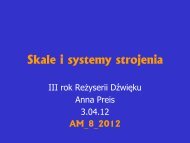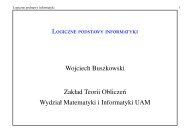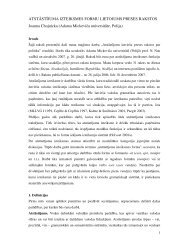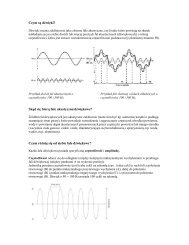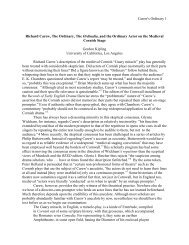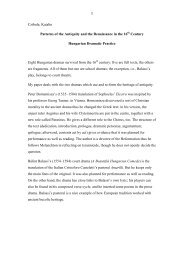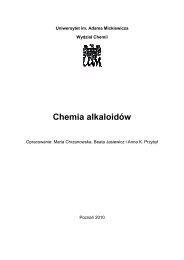Amir Weiner Getting to Know You
Amir Weiner Getting to Know You
Amir Weiner Getting to Know You
You also want an ePaper? Increase the reach of your titles
YUMPU automatically turns print PDFs into web optimized ePapers that Google loves.
32 AMIR WEINER AND AIGI RAHI-TAMM<br />
their utility in fighting crime, local constituencies had traditionally viewed<br />
the passport as a “fundamental document for ascertaining their citizenship.”<br />
In the spring of 1949, these symbols of citizenship were used by the MVD<br />
<strong>to</strong> locate scores of individuals who escaped the initial wave of arrests under<br />
the pretense of routine verification of internal passports. 87 Evidently proud<br />
of their performance, the MGB and MVD decorated dozens of employees<br />
with military awards for distinguishing themselves in conducting the<br />
deportations. 88<br />
This said, the entire operation exposed the tension between the<br />
professional accuracy <strong>to</strong> which they aspired and the modus operandi of<br />
indiscriminate targeting. Thousands of marked people evaded deportation<br />
at the time, requiring additional mop-up operations. But the MGB did<br />
not blink. Forced <strong>to</strong> execute the deportation on short notice and fulfill a<br />
preset quota, it worked with constantly changing lists of deportees. The<br />
primary goal of fulfilling the quotas was achieved by creating a reserve pool<br />
of thousands of potential deportees. The authorities ended up deporting<br />
30,629 families and 90,844 individuals instead of the originally designated<br />
29,000 families consisting of 87,000 individuals. 89 With such methods,<br />
failure <strong>to</strong> fulfill a quota was practically impossible.<br />
As the Stalin era was coming <strong>to</strong> a close, the surveillance system looked<br />
as omnipotent and omnipresent as ever, and the security services seemed<br />
appropriately self-assured. Armed resistance was defeated; and its leaders,<br />
surrounded by Soviet informants, were hunted one by one. “<strong>You</strong> will not<br />
leave this prison. That means that you will not leave as the person that came<br />
here, your views and attitudes intact,” the MVD chief in L´viv <strong>to</strong>ld the wife<br />
of the captured nationalist leader Vasyl´ Halasa during an interrogation in<br />
July 1953. “<strong>You</strong>r only chance for survival is <strong>to</strong> be reborn, become different<br />
people. Of course, you would need <strong>to</strong> make amends <strong>to</strong> the government,<br />
exculpate your actions and the damage you have done.” Which they did.<br />
Halasa’s wife was allowed <strong>to</strong> leave Ukraine—without her children and<br />
family, who were still in exile—and with the hope that this was enough <strong>to</strong><br />
turn her in<strong>to</strong> an informant on émigré nationalist groups. The reeducation<br />
and conversion of archenemies <strong>to</strong> informants included <strong>to</strong>urs in industrial<br />
87 Chebrikov, Is<strong>to</strong>riia, 479; ERAF SM f. 17/1, n. 1, s. 139, l. 250; Elena Zubkova, Pribaltika<br />
i Kreml´, 1940–1953 (Moscow: Rosspen, 2007), 188–90; Shearer, Policing Stalin’s Socialism,<br />
427–29.<br />
88 GARF f. 9479, op. 1, d. 475, ll. 166–69. On 25–26 August 1949, Pravda published lists<br />
of 83 decorated policemen.<br />
89 ERAF SM f. 17/1, n. 1, s. 1, ll. 155–59; GARF f. 9479, op. 1, d. 475, l. 114; ERAF SM f.<br />
17/2, n. 1, s. 306, l. 6; GARF f. 9479, op. 1, d. 475, l. 198; Pasat, Trudnye stranitsy, 485–86.



